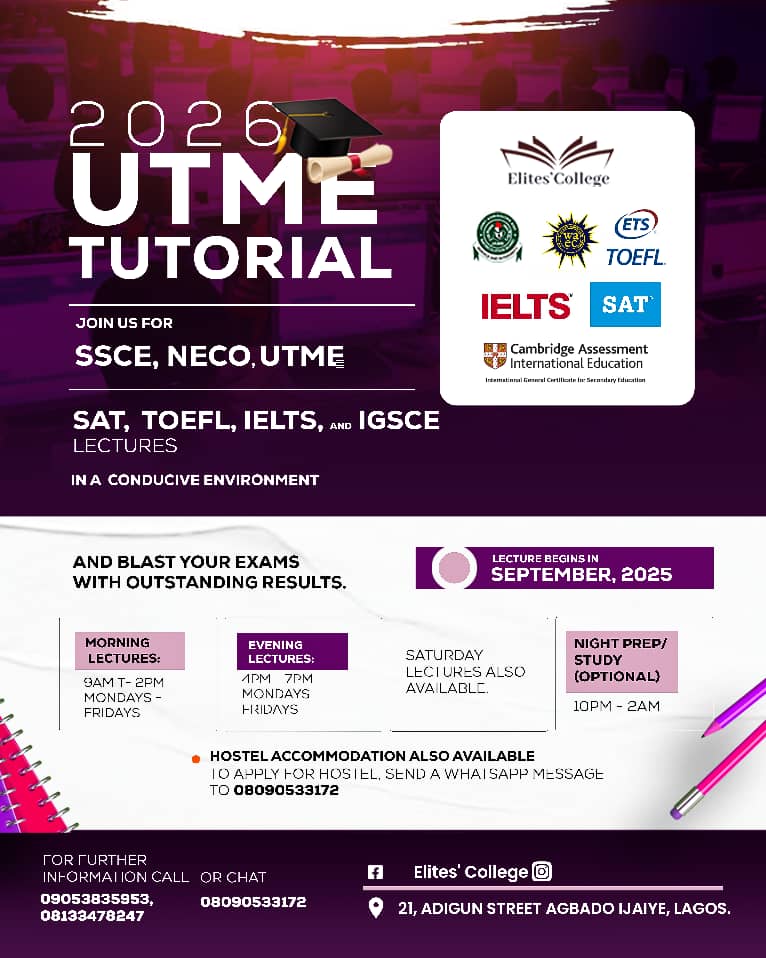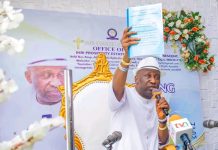Lagos State Governor, Babajide Olusola Sanwo-Olu, has reaffirmed Lagos’s leadership role in disaster preparedness and response, declaring that the true strength of Nigeria lies in its shared readiness and unity of the people when confronting emergencies and national challenges.
Sanwo-Olu, who was represented by his Deputy, Dr. Kadri Obafemi Hamzat, today at the first-ever National State Emergency Management Agencies (SEMA) Conference hosted in Lagos, with the theme “Strengthening Sub-National Emergency Management for a Resilient Nigeria,” held at Balmoral Conventional Centre, Ikeja, emphasized that no state in the country can tackle disasters in isolation.
According to him, “Every State in Nigeria faces its own set of challenges, be it floods, fires, epidemics, industrial accidents, or the unpredictable impacts of climate change. These issues do not recognize borders; they put our systems, our leadership, and our commitment to safeguarding lives and livelihoods to the test,” he said, adding that the conference is a crucial step towards collaboration and forging the strong partnerships that will define the future of emergency management in the country.
His words, “This gathering marks the beginning of a new era: one where State agencies collaborate rather than operate in isolation; where knowledge is shared, lessons are learned, and every citizen, from the North to the South, can have faith in a dependable, coordinated response system.”
Sanwo-olu outlined key investments his administration has made through the Lagos State Emergency Management Agency (LASEMA), which include: Lagos Emergency Response Rescue Unit (LRU), the LASEMA Mobile App & Call Centre Upgrade, Partnerships and Training, among other initiatives.
The Governor cited real-life examples of Lagos’ preparedness, including the rapid deployment of rescue teams during flash floods in Ikorodu and Ajegunle, as well as coordinated operations that saved lives during a building collapse in Mushin, noting that the effectiveness of the reforms by the state government underscores the critical importance of being prepared, working together, and investing in emergency management.
“We need to keep weaving disaster risk reduction into our governance at every level, embrace new technologies and innovations, and, most importantly, empower our citizens with the awareness and strategies they need to be prepared,” Sanwo-Olu charged.
In his welcome address, Commissioner for Special Duties & Intergovernmental Relations, Mr. Olugbenga Oyerinde, noted that the conference provided an avenue for States’ emergency management agencies to be united by a common purpose to strengthen Nigerian residents in the face of emergencies and disasters.
Oyerinde said, “Today, through this conference, we are proudly declaring a new chapter. We are the most prominent reactions to readiness and from recovery to resilience. Where, for the first time, all the States’ emergency management agencies, federal institutions, private sector leaders, international partners, and frontline respondents are gathered under one roof, united by a common purpose to strengthen Nigerian residents in the face of emergencies and disasters.”
In her remarks, the Director-General, National Emergency Management Agency (NEMA), Zubaida Umar Abubakar, noted that the agency remains committed to working with each and every state emergency management agency to protect and tackle disasters in the country.
She added that the agency will strengthen early warning systems, improve data, forecasting, and information management, expand grassroots capacity building, and uphold transparency and accountability in all its interventions in the communities, explaining that Lagos is a city that continues to inspire the nation as a model of resilience, innovation, and determination in emergency management.
In his address titled “From Risk to Readiness: Strengthening Disaster Preparedness at the Sub-National Level,” the Guest Speaker, Dr. Leke Pitan, recalled the purpose behind the establishment of LASEMBUS, noting that it was created to enhance emergency management with ambulances strategically stationed across key locations.
He explained that these ambulances were deliberately positioned in traffic-prone areas, allowing medical teams to provide timely treatment and attend to patients before they reach the hospital.
Dr. Pitan further highlighted that LASEMBUS operations were later integrated with other critical emergency response agencies, including the Fire Service, Police, and Traffic Management personnel. He added that the dedicated emergency line 767 was introduced, and subsequently, the National Toll-Free Emergency number 112 was adopted to further strengthen response coordination.
This is another opportunity to own a faster-loading website to expand your business and take it digitally online. Meet the best website designer/master coder for any kind of website. Contact them now it is affordable Chat now: 09077260922




















